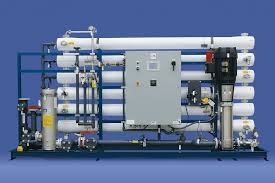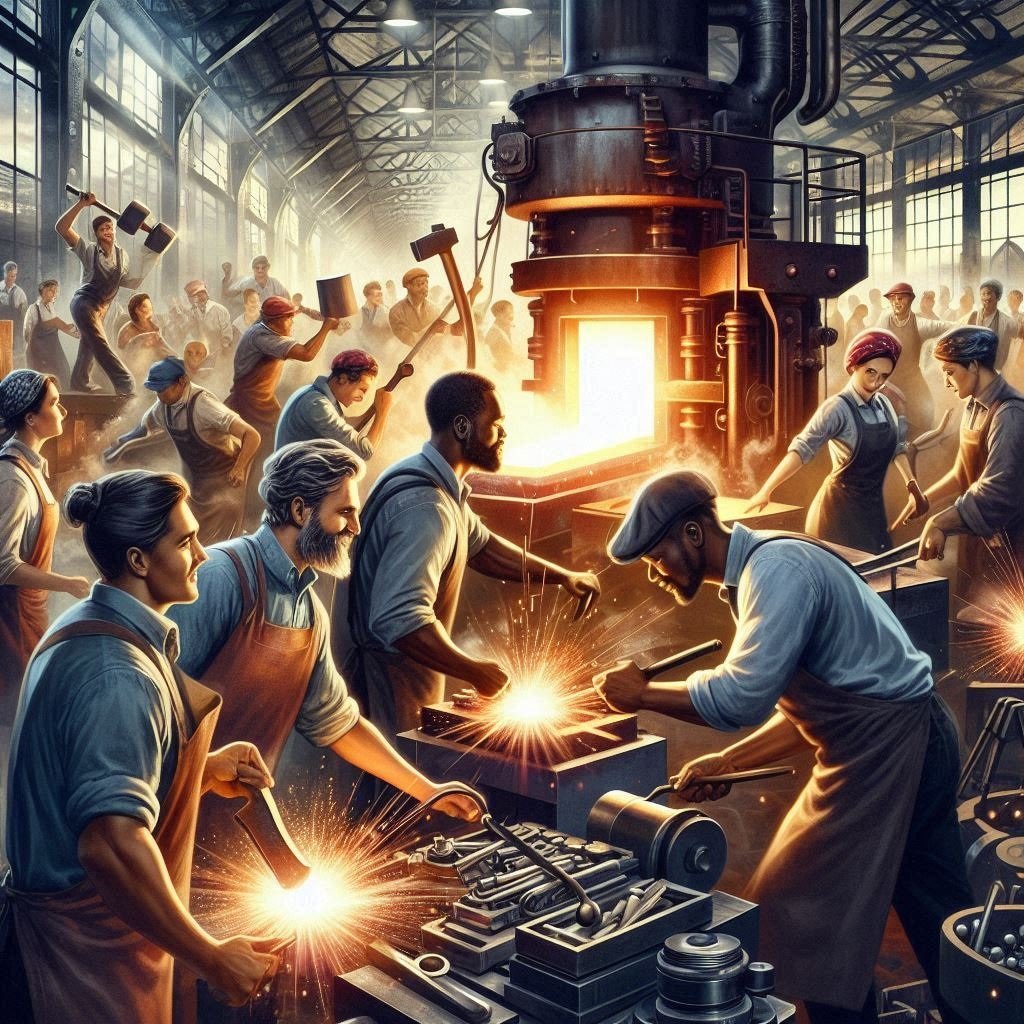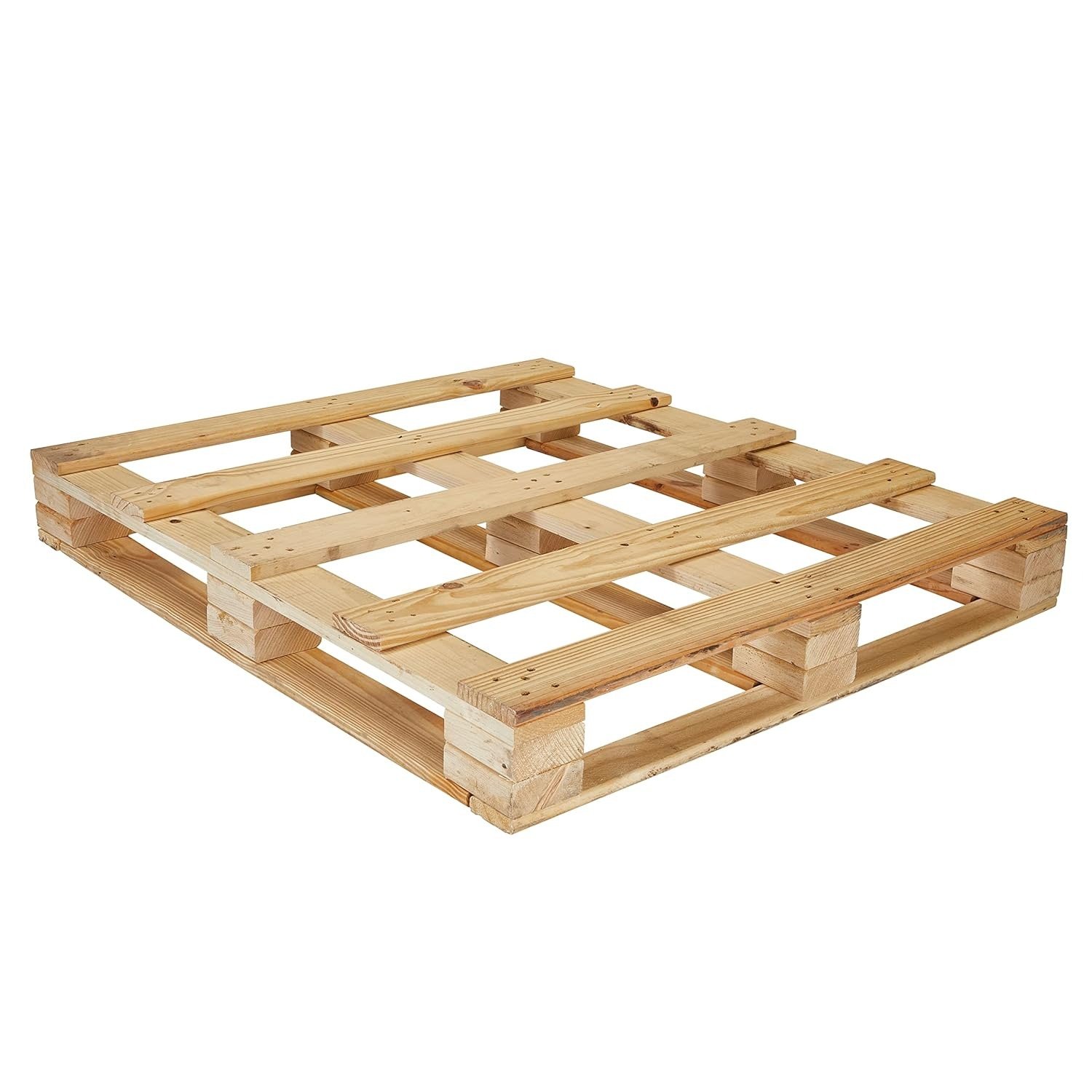From Source to Tap: How Water Treatment and Purification Keep Our Comm

Clean water is one of the most valuable resources on Earth, yet many people rarely think about the long journey it takes before it reaches their homes. Behind every safe glass of drinking water, there are systems, experts, and technologies working continuously to remove pollutants and protect public health. In many regions around the world, including those served by a Water Treatment Company in Iraq, this work is essential for supporting daily life, agriculture, industry, and overall community well-being.
Water treatment is not just a technical process. It is a vital public service that helps prevent diseases, supports economic development, and ensures that future generations will have access to safe water supplies. From rivers and groundwater sources to large treatment plants and individual household taps, the path water follows is filled with careful steps designed to eliminate contaminants and safeguard quality. Understanding this journey helps students, families, and all community members appreciate the importance of these systems and the people responsible for them.
This blog explains the complete process of water treatment, the technologies involved, the challenges faced by communities, and the importance of modern solutions. It also highlights how water treatment supports daily life and why ongoing improvements are necessary to maintain long-term water security.
Why Water Sometimes Needs Treatment
Natural water sources may look clean on the surface, but most contain impurities that can be harmful if consumed without treatment. These impurities come from many sources including soil erosion, agricultural activities, industrial operations, and everyday household wastewater. Even rainwater, which many people consider pure, can pick up pollutants from the air or from surfaces it comes into contact with.
Common contaminants found in untreated water include bacteria, viruses, minerals, chemicals, sediments, and organic matter. Many of these contaminants are invisible to the human eye, which makes professional testing and treatment necessary. Water treatment systems are designed to eliminate these harmful substances and adjust water quality so it meets safety standards.
If communities relied on untreated water, many illnesses would spread quickly. Diseases such as cholera, dysentery, and typhoid have historically been linked to contaminated water. Thankfully, modern treatment methods have significantly reduced these risks, helping communities maintain public health and stability.
The Journey of Water From Source to Tap
Water treatment follows a clear sequence of steps. While each facility may adjust its methods based on local needs, the general process includes collection, screening, coagulation and flocculation, sedimentation, filtration, disinfection, and distribution. Each step plays a critical role in removing different types of contaminants.
1. Collection
The process begins at the water source. This can be a river, lake, reservoir, or underground aquifer. Engineers and scientists evaluate the quality of the source water regularly. They monitor levels of pollutants and estimate the amount of water required to meet community needs. Water from the source is pumped into the treatment facility through large pipes.
2. Screening
Upon arrival at the treatment facility, water passes through screens designed to remove large debris. Items like leaves, sticks, trash, plastics, and other solids are caught here. Removing these objects early prevents damage to equipment and ensures smoother treatment processes later on.
3. Coagulation and Flocculation
This step focuses on removing fine particles that float in the water. Special chemicals called coagulants are added to the water. These chemicals cause tiny impurities to clump together into larger particles known as flocs. Through gentle mixing, the flocs grow bigger and heavier, making them easier to remove in the next stage.
4. Sedimentation
Once the flocs have formed, the water moves to large settling tanks. Here, gravity takes over. The heavy flocs sink to the bottom, forming a layer of sludge. Clean water rises to the top and flows to the filtration system. The sludge collected at the bottom is later treated and disposed of safely.
5. Filtration
Filtration removes any remaining small particles that did not settle during sedimentation. Water passes through layers of sand, gravel, and activated carbon. These filters trap dissolved particles, microorganisms, and chemicals. Activated carbon is particularly powerful because it absorbs unwanted taste, odor, and organic compounds.
6. Disinfection
After filtration, water is nearly clean but still may contain tiny microorganisms. Disinfection ensures all harmful bacteria, viruses, and parasites are destroyed. Chlorine is commonly used because it continues to protect water as it travels through pipes. Some facilities use ozone or ultraviolet light for additional purification.
7. Storage and Distribution
Finally, treated water is stored in large tanks or reservoirs and then pumped through an extensive network of pipes. This network delivers clean, safe water to homes, schools, hospitals, farms, and businesses. Engineers constantly monitor pressure in these pipes to ensure water flows smoothly.
The Importance of Safe Water in Communities
Clean water supports life in countless ways. Without it, households cannot cook, clean, or hydrate safely. Hospitals cannot provide medical care, industries cannot operate efficiently, and farmers cannot produce enough food. When water is contaminated, the entire community suffers.
Safe drinking water:
- prevents the spread of diseases
- supports healthy growth and development
- improves sanitation
- encourages economic activity
- builds stronger, more resilient communities
Students benefit greatly from access to safe water because it helps maintain good health, reduces absenteeism, and allows them to focus on learning rather than illness.
Modern Technologies in Water Treatment
Water treatment has advanced significantly over the years. Today, many facilities rely on new technologies that increase efficiency and improve water quality.
Membrane Filtration
Membrane systems use a thin sheet material with microscopic pores. These pores allow water molecules to pass through while blocking contaminants. The most common types include microfiltration, ultrafiltration, nanofiltration, and reverse osmosis.
Ultraviolet Disinfection
Ultraviolet light destroys microorganisms by damaging their DNA. This process is chemical free and leaves no residue in the water.
Advanced Oxidation Processes
These processes use powerful oxidants that break down harmful chemicals and organic pollutants. They are used in areas where water contains industrial contaminants.
Smart Monitoring Systems
Digital sensors and automated controls allow treatment plants to monitor water quality in real time. This helps operators respond immediately to any changes or problems.
Challenges Faced in Water Treatment
Even with technological progress, water treatment systems face many challenges. Climate change is reducing freshwater availability in some regions. Population growth increases demand for treated water. Industrial activities can introduce new pollutants into rivers and groundwater.
Maintaining water treatment facilities requires skilled technicians, proper funding, and continuous improvement. Aging infrastructure can lead to pipe leaks and contamination risks. In some areas, power shortages affect the ability to run treatment equipment.
Communities must invest in long-term solutions, train water specialists, and educate the public about water conservation. Every citizen plays a role by using water responsibly and supporting efforts to protect water sources.
Water Treatment in Local Contexts
Every region has unique needs and challenges. Some communities rely on river water, while others depend mainly on groundwater. Environmental conditions, climate, and population size also influence treatment methods. In Iraq, for example, modern treatment facilities continue to expand to meet growing community needs and support vital sectors such as agriculture, education, and industry.
Local companies and organizations play a major role in providing treatment solutions, building infrastructure, and offering maintenance services. These efforts help ensure that water remains clean and accessible for households across the region.
Role of Water Treatment Products and Services
Reliable treatment systems depend on high quality equipment and skilled professionals. Pumps, filters, membranes, control panels, chemicals, storage tanks, and testing tools are all essential components. Expertise is equally important because proper installation and maintenance ensure long term performance. Many regions rely on specialized providers that offer complete solutions and support.
Within this context, Water treatment products and services in Iraq continue to evolve to meet local needs. This includes upgrading filtration systems, improving monitoring technologies, and expanding service networks to reach more communities. These improvements contribute to better health outcomes and more stable water supplies.
How Individuals Can Help Protect Water Resources
Everyone can contribute to protecting water quality. Simple actions like reducing household waste, avoiding chemical dumping, conserving water, and supporting local cleanup programs make a meaningful difference. Schools and community organizations can promote awareness by teaching students how water systems work and why environmental protection matters.
Using water wisely also reduces pressure on treatment plants. Turning off taps when not needed, fixing leaks, and choosing water efficient appliances can save significant amounts of water each year.
Conclusion
The journey from source to tap is long and carefully managed. Water treatment and purification play essential roles in keeping communities healthy, supporting economic growth, and protecting the environment. With the help of dedicated professionals, advanced technologies, and responsible citizens, safe water can be maintained for future generations.
Understanding how water treatment works empowers students, families, and communities to appreciate its value and support efforts to improve and protect this life-sustaining resource. Clean water is not guaranteed without effort. It is the result of planning, science, teamwork, and continuous improvement. When everyone participates in safeguarding water resources, the entire community benefits.
Comments
You must be logged in to comment.
Latest Articals
-

Memory Integrated Circuits Market Scope: Growth, Share, Value, Size, and Analysis By 2032
The global memory integrated circuits market size was valued at USD 727.87 million in 2024 and is projected to reach USD 1302.98 million by 2032, with a CAGR of 7.55% during the forecast period of 2025 to 2032.The global business landscape is undergoing a transformation, with industries increasingly leaning on deep research and actionable insights to make strategic decisions. One segment seeing tremendous traction is the Memory Integrated Circuits Market, which has proven instrumental for stakeholders seeking data-driven direction. This overview presents a strategic breakdown of recent movements within this space, highlighting critical developments, market forces, and projections.With an emphasis on emerging markets, shifting consumer behaviour, and digital transformation, the Memory Integrated Circuits industry offers immense potential for innovation and disruption. Businesses that leverage intelligent research and remain adaptive to market evolution are well-positioned to lead in the coming years.See what’s driving the Memory Integrated Circuits Market forward. Get the full research report: https://www.databridgemarketresearch.com/reports/global-memory-integrated-circuits-marketMarket TrendsA series...
-
PBKS vs CSK Head To Head Stats and Match Insights
PBKS vs CSK Head To Head data highlights the performances, key match trends, and overall record between both teams. This detailed breakdown covers batting impact, bowling contributions, winning patterns, venue advantages, and memorable moments that shaped their meetings. The comparison helps understand how both sides compete across different conditions with consistent match intensity.
-

Gameone 娛樂城:安全可靠的線上遊戲新體驗
在現代娛樂市場中,線上遊戲已成為人們休閒娛樂的重要方式,而 Gameone 娛樂城 以其專業、安全和多元的遊戲選擇,迅速成為玩家首選的平台。無論是喜歡經典老虎機、真人娛樂還是桌面遊戲的玩家,都能在 Gameone 找到適合自己的遊戲內容。多樣化的遊戲選擇 Gameone 娛樂城提供各種遊戲類型,滿足不同玩家的需求。對於喜歡刺激和挑戰的玩家,平台的真人娛樂遊戲如百家樂、輪盤和骰寶,帶來身臨其境的遊戲體驗。對於喜歡單人挑戰的玩家,各式老虎機和電子遊戲則提供豐富的玩法和高額獎金機會。多樣化的遊戲選擇讓每位玩家都能找到自己的娛樂方式。安全可靠的遊戲環境 在 Gameone,玩家的安全與隱私是首要考量。平台採用先進的加密技術,確保用戶資料和交易信息受到保護。此外,Gameone 也設有嚴格的遊戲規範和公平機制,保證每位玩家在公平、安全的環境下享受遊戲樂趣。這種專業和負責任的態度,使玩家可以安心投入遊戲,而無需擔心資訊外洩或不公平操作。便捷的存取與操作 Gameone 娛樂城的操作介面簡單直觀,即使是新手玩家也能快速上手。無論是電腦還是手機,玩家都能隨時隨地進入平台,享受遊戲樂趣。平台還提供多種支付方式,方便玩家快速充值與提現,提升整體遊戲體驗。專業的客服支援 在遊戲過程中,如果遇到任何問題,Gameone 提供全天候的客服支援。無論是帳號問題、遊戲疑問還是交易困難,專業客服人員都能快速回應並提供有效解決方案,確保玩家遊戲過程順暢無憂。結語 總體來說,Gameone 娛樂城 是一個集安全性、娛樂性與便捷性於一身的線上遊戲平台。不論是追求高額獎金的玩家,還是尋求休閒娛樂的人士,都能在 Gameone 找到理想的遊戲體驗。透過專業的遊戲設計和貼心的服務,Gameone 持續為玩家提供優質的娛樂享受。在這篇文章中,我們將帶你深入了解 Gameone 娛樂城的特色和優勢,幫助你輕鬆開始線上遊戲的新旅程。
-

Top Reasons to Choose Forging Manufacturers India for Quality Parts
Forging manufacturers in India are recognized for tough and dependable metal components, supplying a wide range of parts to a number of industries around the world. The components are usually used in very challenging conditions and are fabricated to last for years. The makers in India follow very stringent instructions with advanced tools, so they can guarantee safe, durable, and quality forged pieces. Here are the key reasons for selecting forging manufacturers in India to obtain quality parts.Advanced Technology and Modern MachineryForging manufacturers in India use advanced machines for shaping metal. These machines give a smooth finish to each part. They also help in making parts with exact size and shape. Due to this, buyers get products that fit well and work well.Indian companies update their machines on a regular basis. They also use new methods to improve the strength of forged parts. These steps help them maintain global quality...
-

Operating and Setup Cost for Pallets Manufacturing Plant
IMARC’s new report titled “Pallets Manufacturing Plant Project Report 2025: Industry Trends, Plant Setup, Machinery, Raw Materials, Investment Opportunities, Cost and Revenue” provides a complete roadmap for setting up a pallet manufacturing plant. The study covers all key aspects you need to understand before entering the pallet industry. It breaks down plant setup costs in detail, offering clear insights into initial capital investment and infrastructure planning. This report is essential for entrepreneurs, investors, researchers, consultants, business strategists, and anyone interested in the pallet manufacturing sector. The report also analyzes pallets manufacturing plant cost to help stakeholders evaluate financial requirements and long-term profitability.What are Pallets?Pallets are flat, durable platforms used for handling, storing, and transporting goods efficiently within warehouses, distribution centers, and logistics chains. They are commonly made from wood, plastic, or metal and are designed to support heavy loads while ensuring smooth movement using forklifts, pallet jacks, or automated systems....
-

Raw Material Requirements for Omega 3 Fish Oil Manufacturing Plant Setup
IMARC's new report titled "Omega 3 Fish Oil Manufacturing Plant Project Report 2025: Industry Trends, Plant Setup, Machinery, Raw Materials, Investment Opportunities, Cost and Revenue," provides a complete roadmap for setting up an omega 3 fish oil manufacturing plant. The study covers all the essential aspects you need to understand before entering the omega 3 fish oil industry. It breaks down the plant setup costs in detail, offering clear insights into initial capital investment and infrastructure planning. This report is valuable for entrepreneurs, investors, researchers, consultants, business strategists, and anyone interested in the omega 3 fish oil sector. It also analyzes the omega 3 fish oil manufacturing plant cost, helping stakeholders understand financial requirements and evaluate long-term profitability.What is Omega 3 Fish Oil?Omega 3 fish oil is a nutrient-rich extract obtained from the tissues of fatty fish such as salmon, mackerel, anchovies, sardines, and tuna. It is produced through processes...